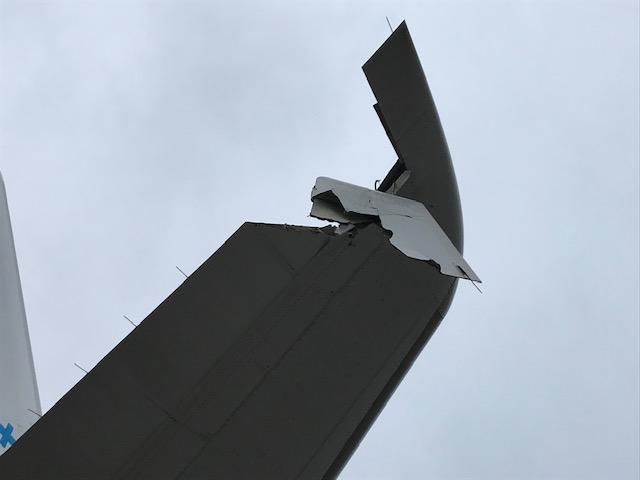
Collision during pushback
On 13 February 2019, during pushback at Amsterdam Airport Schiphol, a Boeing 747-400 collided with a Boeing 787-9 standing on the taxiway before taxiing out. Ground Control had issued a long pushback clearance to the B787. The flight crew passed this clearance on to the pushback driver. The driver positioned the B787 approximately 20 meters beyond the pushback limit line on the taxiway. Shortly after, a B747 also received clearance to commence pushback. Following his pushback clearance to the B747, the ground controller realised that this pushback would possibly bring the B747 close to the B787, so he issued a cautionary message to the B747 flight crew. The transmission of this message was partially blocked out by another transmission. There was no readback of the message by the flight crew of the B747, and the ground controller did not act on the missing readback. As a result, the message was not forwarded to the B747 pushback truck driver. The pushback truck driver of the B747 was not aware of the long pushback of the B787. From his position, he could not determine the exact position of this aircraft on the manoeuvring area and during the push his view on the B787 was obstructed by the engines of the B747.
Deviation from standard pushback procedure
The undocumented long pushback procedure used in this accident was not an assessed and aligned procedure within the sector parties at Schiphol. The non-standard pushback of the B787 introduced non-standard conditions the pushback truck driver of the B747 was not aware of. Deviating from standard procedures is not an uncommon practice for air traffic controllers at Schiphol, as was also noted in previous investigations of the Dutch Safety Board, such as the 2017 Schiphol investigation. The reason for deviating from the standard pushback procedure was to ensure an efficient flow of traffic. This deviation, however, introduced risks as separation margins were no longer ensured. The non-standard pushback of the B787 implied a temporary restriction of other traffic in its vicinity. The mitigation action implemented by the ground controller – issuance of a cautionary message – was not effective, as the transmission of this message was blocked. The assessment of the taxiway behind the aircraft and the issuance of conflict-free pushback clearances is the responsibility of Ground Control and cannot be delegated to a pushback truck driver. A pushback clearance should only be issued when adequate separation can be guaranteed.
Amended working practice for long pushback procedure
Following the pushback accident, the sector parties decided to conduct a joint investigation in the context of the Integral Safety Management System (ISMS). The ISMS investigation has identified relevant safety issues. The working practice of a long pushback procedure has been amended by Air Traffic Control the Netherlands (LVNL) and only clearances with a specific end position shall be issued by the ground controller. Although providing more clarity, this working practice whereby separation margins may no longer be guaranteed is still being used. This introduces complexities and safety risks as it is not an assessed procedure. It is uncertain to what extent a set of additionally safety measures identified by the sector parties will contribute to a further risk reduction of pushback collisions, as for the majority of these measures further study or technological development is needed.
